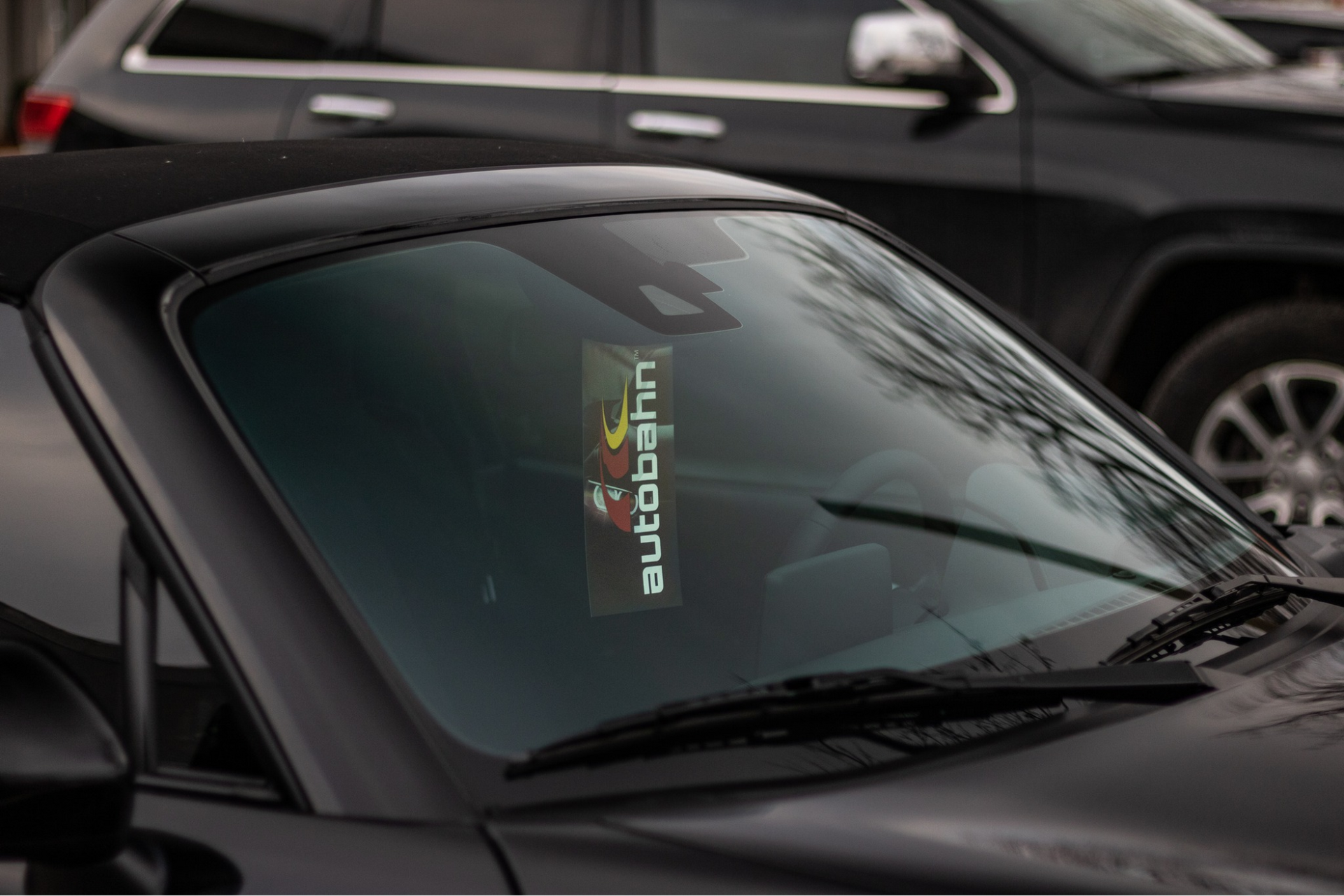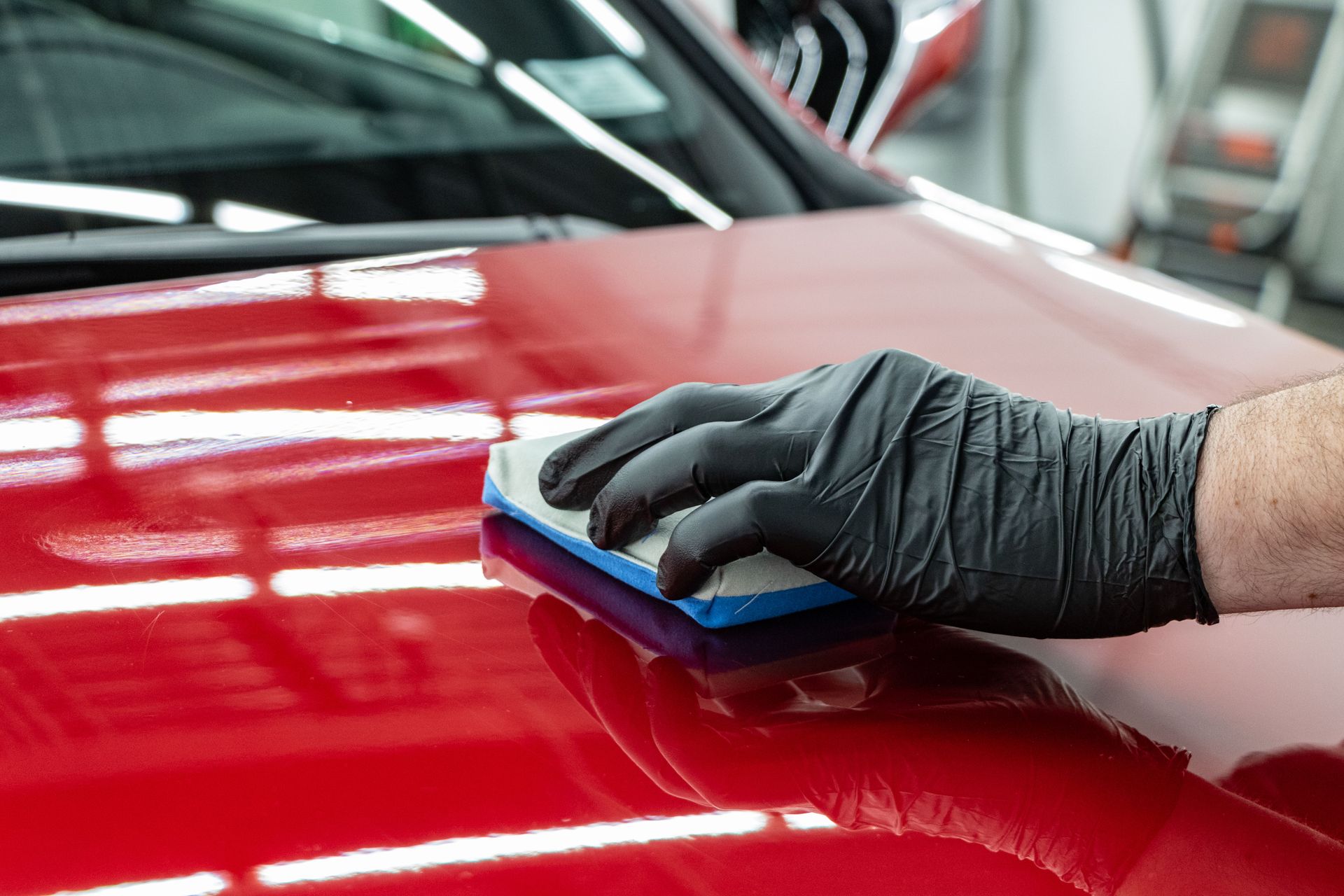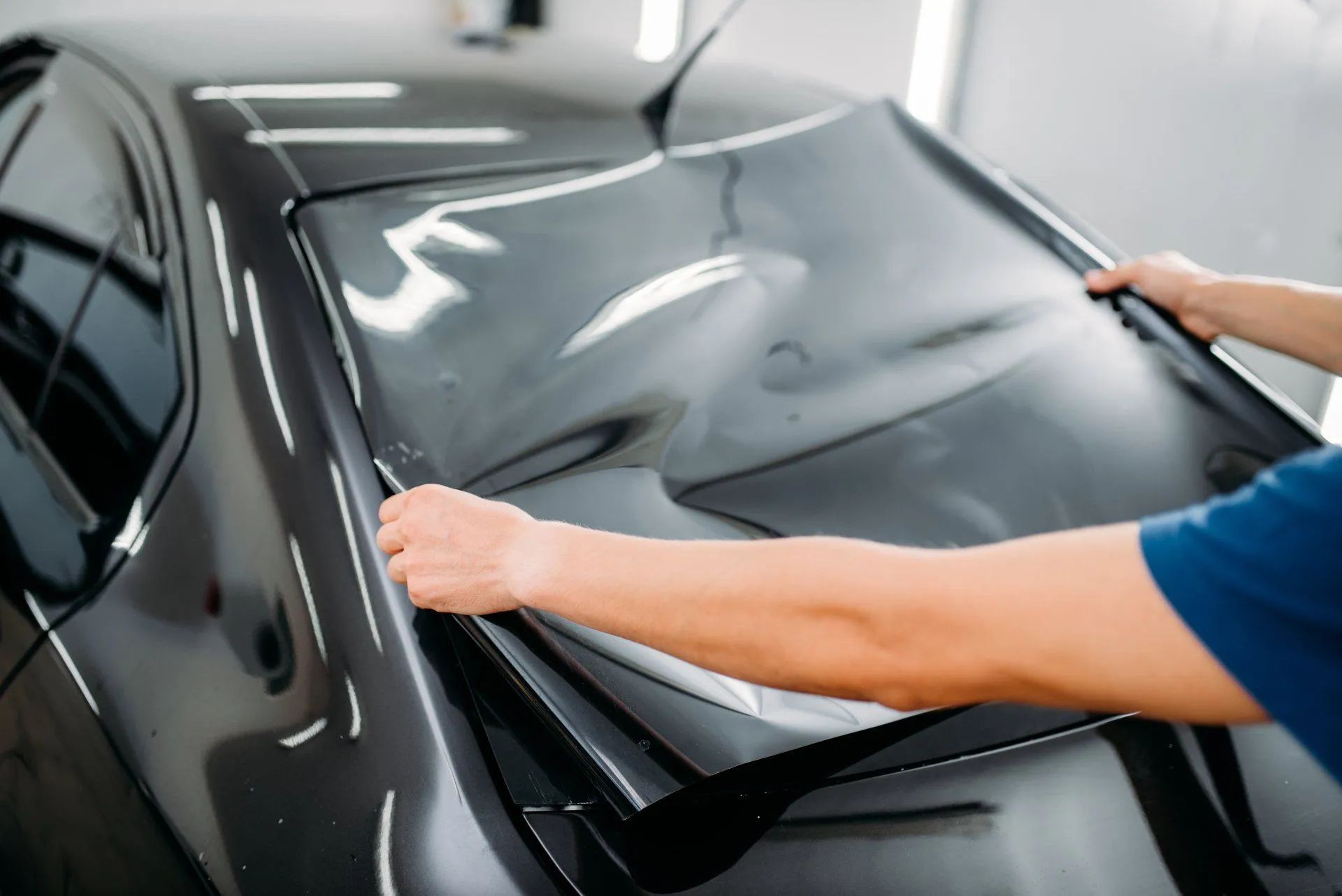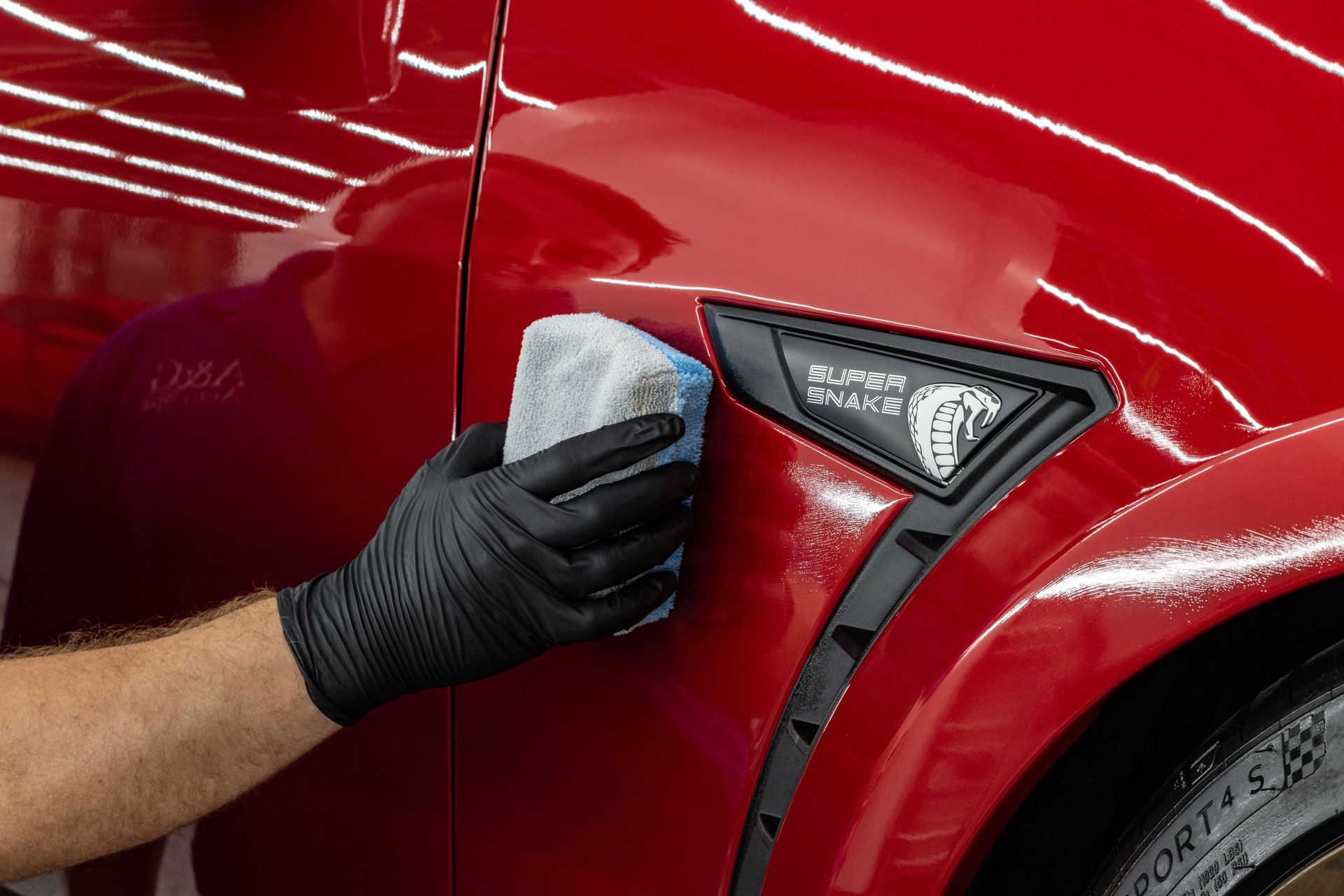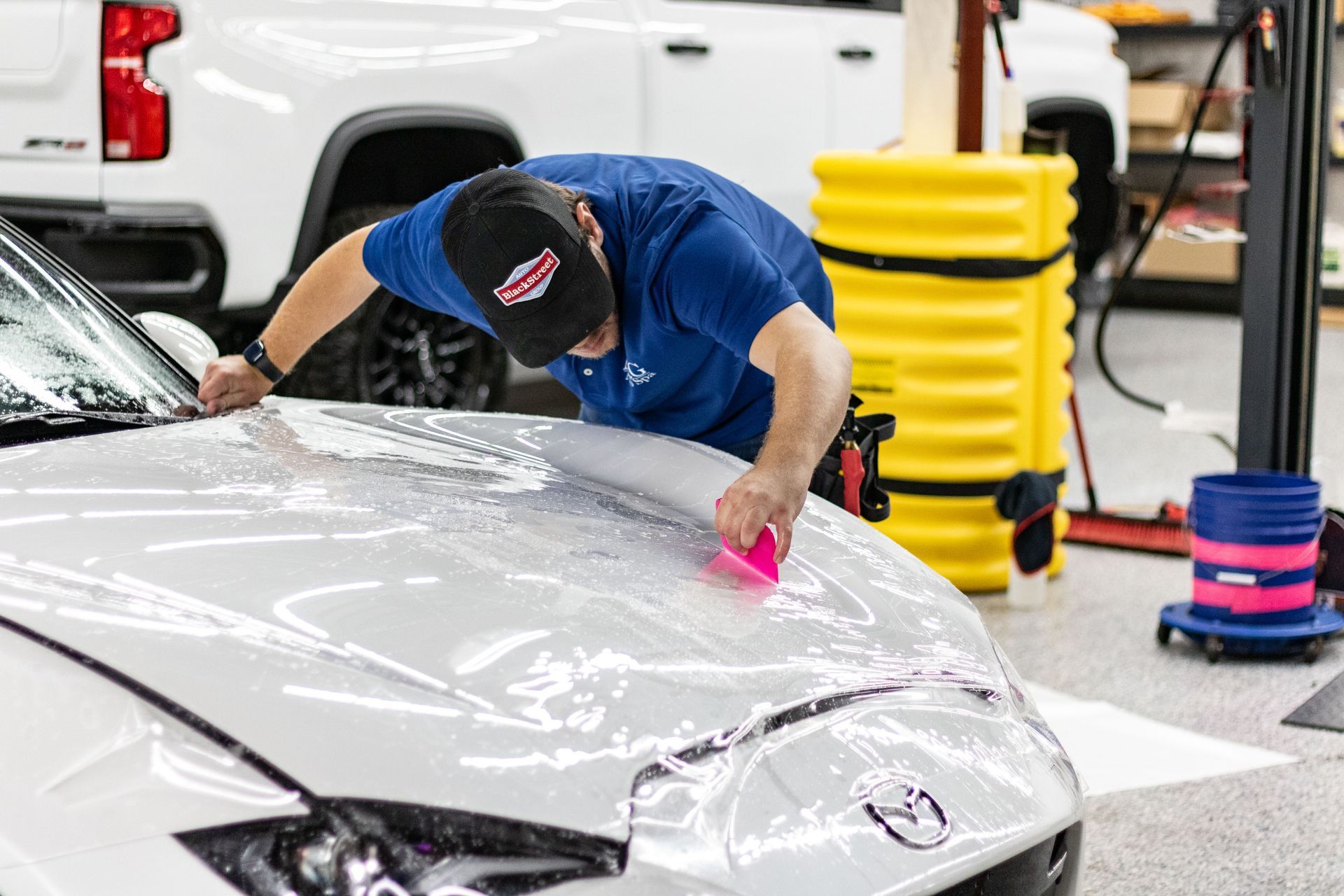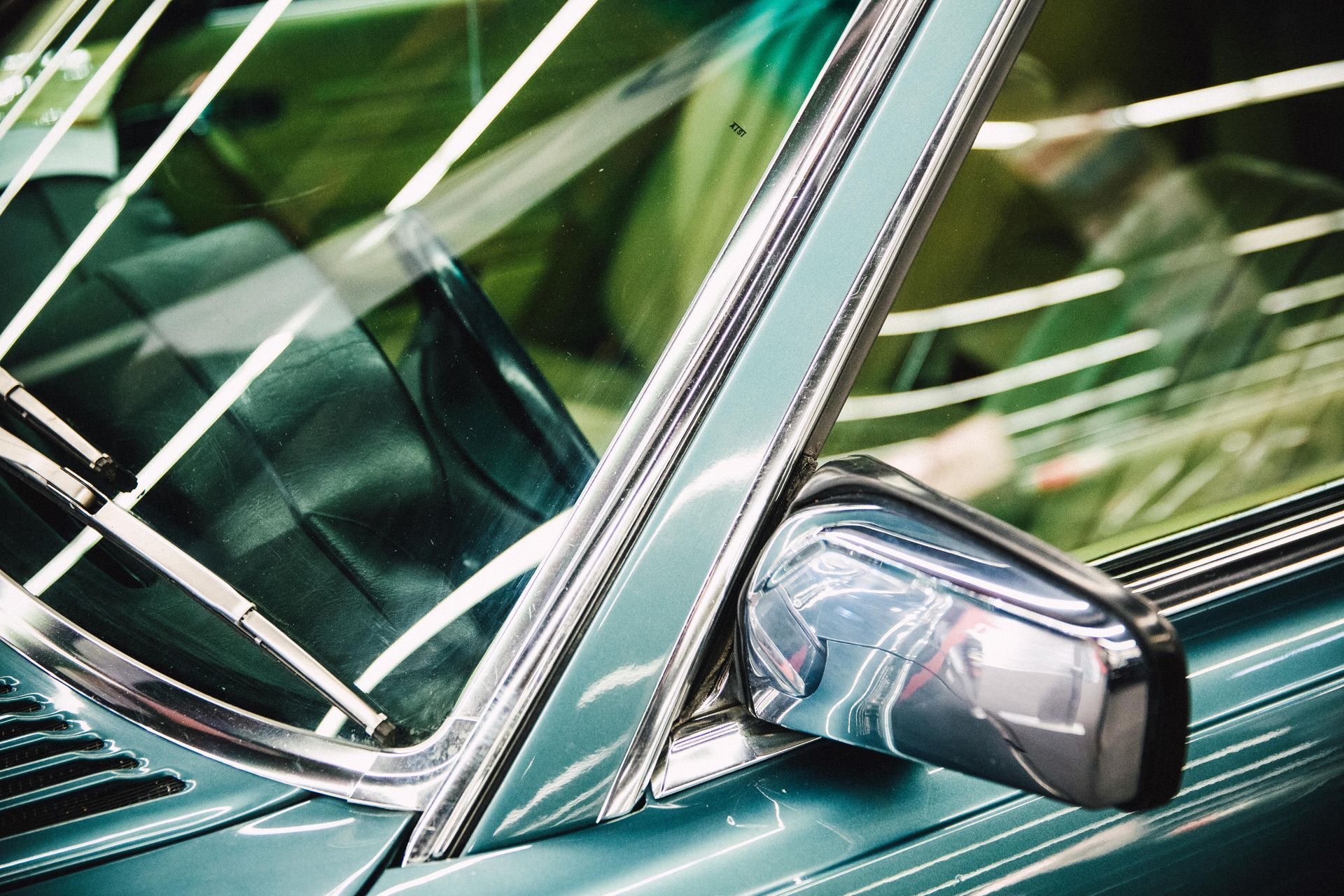Can Paint Protection Film Be Applied Over Existing Paint Chips?
You're considering paint protection film for your vehicle, but there's a problem – your paint already has a few chips from daily driving. Can PPF simply cover these imperfections and protect your vehicle going forward, or do you need to fix everything first?
This is one of the most common questions we hear from vehicle owners. While technically possible in some cases, applying PPF over paint chips on car surfaces comes with significant considerations that affect both appearance and long-term durability.
Understanding why surface condition matters for PPF installation helps you make informed decisions about protecting your vehicle. Let's explore what happens when PPF meets existing paint damage.
Understanding Paint Protection Film Requirements
Paint protection film is designed to bond with smooth, intact paint surfaces. The adhesive system relies on creating a molecular connection with the paint's clear coat layer. This bond is what gives PPF its durability and self-healing properties.
When paint chips on car surfaces exist, they create discontinuities that interfere with this bonding process. The film can't create the same uniform adhesion across damaged areas, leading to potential problems down the road.
PPF is incredibly thin and flexible, which is great for conforming to vehicle curves. However, this same flexibility means it can't hide or fill surface imperfections. Instead, the film conforms to every contour, including chips and scratches, making them visible through the protective layer.
The goal of PPF installation at A&G Auto Spa is creating a seamless protective barrier that preserves your vehicle's appearance while providing superior protection. Starting with compromised paint makes achieving this goal significantly more difficult.
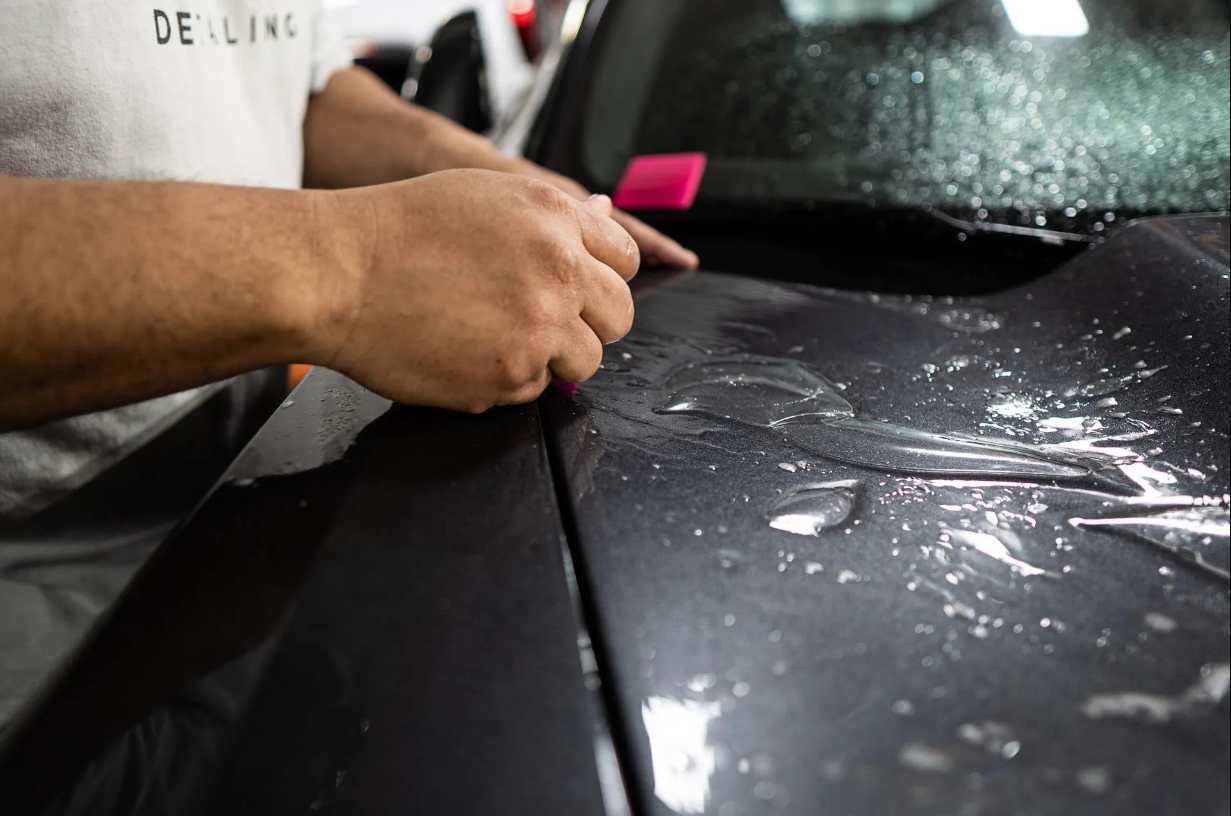
What Happens When PPF Covers Paint Chips
When paint protection film is applied directly over paint chips on car surfaces, several issues can develop that compromise both appearance and performance.
Visible Imperfections: The film will telegraph the underlying damage, making chips and scratches visible through the clear protective layer. This defeats one of the main purposes of PPF – maintaining a flawless appearance.
Adhesion Problems: Areas with exposed primer or bare metal don't provide the same bonding surface as intact clear coat. The film may adhere initially but can develop lifting or bubbling in these compromised areas over time.
Moisture Infiltration: Paint chips create pathways for moisture to reach the metal substrate. When PPF is applied over these damaged areas, moisture can become trapped between the film and the paint, potentially accelerating corrosion.
Edge Lifting: Chips create irregular surfaces where film edges may not seal properly. These areas become vulnerable to lifting, especially when exposed to car washes and weather.
Why Surface Preparation Matters
Proper surface preparation is the foundation of successful paint protection film installation. The condition of your paint directly impacts how well the film adheres and how long it lasts.
Surface preparation involves more than just cleaning. It requires assessing the paint's integrity, identifying any damage, and determining what repairs are necessary before film application.
Clean, intact paint allows the PPF adhesive to form a strong, uniform bond across the entire protected surface. This consistent adhesion is what prevents lifting, bubbling, and premature failure. When the surface is compromised by chips or scratches, achieving this uniform bond becomes impossible.
Professional installers understand that shortcuts in preparation lead to problems later. The time invested in proper surface prep pays dividends through improved appearance and extended film life. At A&G Auto Spa, our certified installers assess and prep every surface to ensure your paint protection film performs flawlessly for years
The Case for Repairing Paint Chips First
Addressing paint chips on car surfaces before PPF installation provides numerous advantages that justify the additional investment.
Optimal Adhesion: Repaired paint provides a smooth, consistent surface for the film to bond with. This ensures the adhesive performs as designed, creating the strong attachment that prevents future problems.
Better Appearance: When chips are properly repaired before film application, the finished result looks flawless. The PPF becomes invisible, protecting perfect paint rather than highlighting existing damage.
Corrosion Prevention: Paint chip repair seals exposed metal, preventing rust from developing underneath the protective film. This is particularly important for long-term vehicle preservation.
Improved Durability: PPF installed over properly repaired paint lasts longer because it adheres uniformly across the entire surface. There are no weak points where lifting or failure can begin.
Paint Chip Repair Process
Professional paint chip repair involves several steps that restore the paint's integrity before PPF installation.
Damage Assessment: Each chip is evaluated to determine the depth of damage and the best repair approach. Surface chips may require different treatment than damage that reaches primer or metal.
Surface Cleaning: The damaged area is thoroughly cleaned to remove any contaminants that could interfere with the repair process.
Repair Application: Depending on the damage severity, repairs may involve touch-up paint, blending, or more extensive work. The goal is creating a smooth surface that matches the surrounding paint.
Curing and Finishing: Repairs must fully cure before PPF installation. Rushing this step can compromise both the repair and the film application.
Professional shops like A&G Auto Spa have the expertise and materials to perform repairs that seamlessly integrate with existing paint, creating the ideal surface for PPF application.
When PPF Over Chips Might Be Acceptable
There are limited situations where applying PPF over minor paint chips on car surfaces might be considered, though it's never the ideal approach.
Minor Surface Scratches: Very light scratches that don't penetrate the clear coat may be acceptable under PPF if they're properly cleaned and prepared.
Time or Budget Constraints: If immediate protection is needed and repairs must wait, a temporary PPF application might be considered with the understanding that optimal results require eventual repair.
Low-Visibility Areas: For chips in areas that aren't highly visible, some owners may choose to accept less-than-perfect results under the film.
However, even in these situations, proper disclosure and realistic expectations are essential.
The Role of Professional Assessment
Determining whether your paint is suitable for PPF installation requires professional evaluation. Experienced installers can assess damage severity and recommend the best approach for your specific situation.
This assessment considers multiple factors including chip location, damage depth, paint condition, and your goals for the installation. Based on this evaluation, installers can provide honest recommendations about whether repairs are necessary.
Professional assessment also identifies potential problems that might not be obvious to vehicle owners. This prevents disappointment and ensures you understand exactly what results to expect.
Alternative Protection Options
For vehicles with significant paint chips on car surfaces, alternatives to traditional PPF installation might be worth considering.
Paint Correction First: Investing in comprehensive paint correction before PPF application ensures optimal results. This approach may cost more initially but provides the best long-term value.
Partial Coverage: Protecting only undamaged areas while planning repairs for damaged sections allows you to start benefiting from PPF protection immediately.
Matte Paint Protection Film: For certain vehicles and situations, matte finish films may offer different options for managing surface imperfections while providing protection.

Get the Most Out of Your PPF Installation
While paint protection film can technically be applied over paint chips on car surfaces, doing so compromises both appearance and durability. The film will reveal underlying damage rather than hiding it, and adhesion problems in damaged areas can lead to premature failure.
The best approach is addressing paint chips through proper repair before PPF installation. This ensures optimal adhesion, prevents corrosion, and delivers the flawless appearance that makes PPF worthwhile. While it requires additional investment upfront, repairing chips first provides better long-term results.
Professional assessment is crucial for determining the best path forward for your specific vehicle. Experienced installers can evaluate your paint condition and recommend approaches that balance your goals, timeline, and budget.
If you're considering PPF for a vehicle with existing paint damage,contact our team for a professional assessment and guidance on the best approach for your vehicle.
Frequently Asked Questions
Can PPF hide existing paint chips on my car?
No, PPF is too thin to hide existing paint chips. The film conforms to the surface contours, making chips visible through the protective layer. Proper paint chip repair before PPF installation is necessary for a flawless appearance.
What happens if I apply PPF over paint chips?
Applying PPF over paint chips can lead to visible imperfections, adhesion problems, moisture infiltration, and premature film failure. The film may lift or bubble in damaged areas, and trapped moisture can accelerate corrosion underneath.
Can small scratches be covered by PPF without repair?
Very minor surface scratches that don't penetrate the clear coat might be acceptable under PPF after proper cleaning. However, deeper scratches should be repaired first for optimal results and adhesion.
Should I repair all paint chips before PPF installation?
Ideally, yes. Repairing all chips before PPF installation ensures optimal adhesion, prevents corrosion, and delivers the best appearance. Professional assessment can help determine which repairs are necessary for your specific situation.
How does paint chip repair affect PPF installation quality?
Paint chip repair creates a smooth, uniform surface that allows PPF adhesive to bond properly across the entire protected area. This results in better appearance, longer-lasting protection, and prevents issues like lifting or moisture infiltration.

